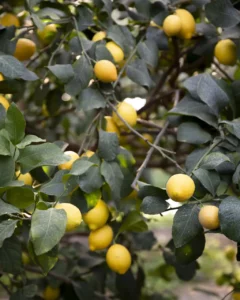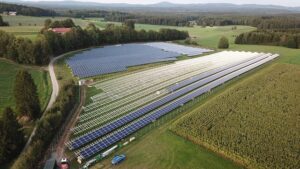Popularly known as the Citron of Calabria – the fruit first came to Italy around 200 BC. Also known as Cedro in Italian, it is the oldest variety of citrus. The tree of Citron grows to more than a meter and finds the mild temperate weather of the Mediterranean areas as the best. This includes places like Diamante (Calbria), Sicily, and Sardegna.
It is the best fruit for culinary uses without any juice but has a rich aroma and a great pulp. However, the Citron plant is delicate and difficult to grow in freezing temperatures, excessive wind, and heat.
Talking about the ones that grew in the Diamante region of Italy, large Liscia Diamante (Citron) – weighed up to 11lb (5kg) each. Perfume makers used the fruit to extract essential oils. Also, for Jewish priests, it was an auspicious offering they used in prayer during the seven-day festival of Sukkot. Every other family in the Diamante region had a Citron tree, and with time the place came to be known as Riviera dei Cedri.
The Citron Of Calabria – A Story Of Its Downfall
However, over the last 50 years, the Liscia Diamante has almost ceased to grow. Making its way to the list of fruits that have become extinct over time. And the reason behind this goes as follows:
- The natives of Calabria started shifting to other parts of the world for a better life, for which they sold their lands, and there was no one to look after the tree.
- Cheaper industrial substitutes replaced the finest essential oils from Liscia Diamante extracts.
- Those who stayed behind were not earning enough profit by growing the Citron of Calabria plants. So they eventually stopped.
The Citron Of Calabria – A Story Of Its Revival
The Lancellotta family from Italy has developed an eco-friendly solution where they are experimenting with the technology of “agrivoltaics,” harvesting crops under solar panels. The head of the family is an agronomist and came across the idea in 2009.
While others believe that plants do not grow well under the shades, the growth of the Lancellotta family’s produced citruses makes it all a mere myth. Further, he adds, Citron trees are vulnerable to extreme climatic changes. And how in 2017, an unusual winter frost damaged all other harvests in the nearby areas, other than the Lancellottas’ trees, because they were protected under the roof. The family went on distributing grafts of their trees, helping protect the region’s ancient agricultural plantations – the Citron of Calabria.

The high installation cost and difficulty with making investors believe that the project is for good keep other farmers away from the same. However, the Lancellotta family has been able to partner with EF Solare Italia (the largest solar plant-owning firm in Italy), which owns the majority of the panels installed on the Lancellotta family farm.
How Can Solar-Powered Agrivoltaic Systems Help Retain Natural Agricultural Growth Against Changing Climate?
While the Lancellotta family enjoys their share of benefits from agrivoltaics technology growing the Citron of Calabria, another researcher has come forward with his essential inputs.
Joshua Pearce (a professor and photovoltaic researcher at Ontario West University, Canada) is working on “how agrivoltaics can protect crops and increase produces in fruit grains, berries, and other vegetables?” He also went on to point to another study, which shows how pine trees will not be able to sustain the climatic change in several parts of Canada in the near future. And does encourage pine tree farmers to adopt agrivoltaics technology.
How Can Solar-Powered Agrivoltaic Systems Help Retain Energy Consumption Demand All Over The Globe?
With the rise in population and increased use of gadgets and other electronic devices, electricity boards across all nations find it hard to make up for the daily demand. A limited amount of fossil fuels leaves Earth’s citizens with no option but to rely on solar power plants. At first, it was only about using the land. Now, one can install solar panels over the water and agricultural spaces. And a comprehensive study has established the same, talking about co-developing a particular area and using it to grow crops and generate electricity simultaneously – known as agrivoltaics.

The State University of Oregon’s study indicates impressive potential for solar energy and agriculture to work together. After combining, evaluating, and re-evaluating multiple findings, the researchers stated that the relationship between weather and solar panels is like the people and weather. The more the weather is cool, the happy are the people so are the plants in their efficiency levels. Also, they state that solar plants can potentially enhance agricultural production on dry and unirrigated farmland.
So that explains how solar power helped with the regrowth of an ancient fruit and has so much potential to do better.



